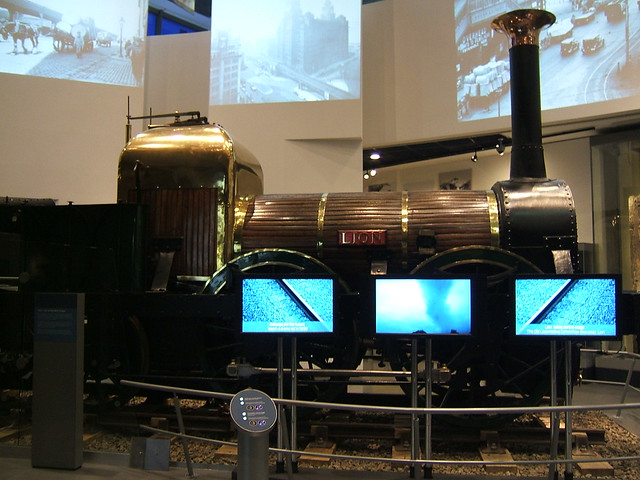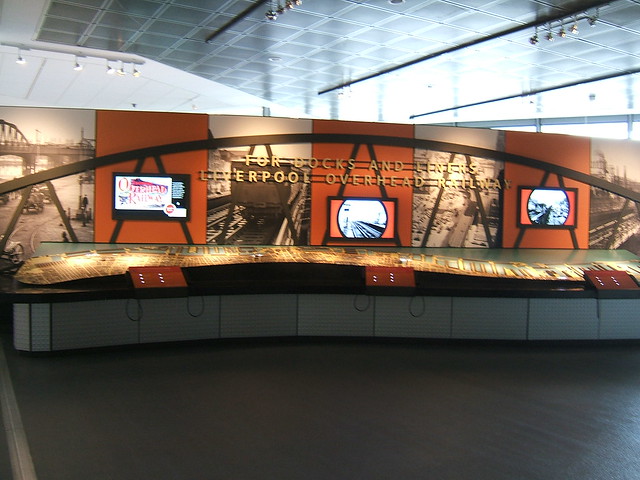 Watery Lane after conversion to a Shunting Frame, still retaining the rather forbidding appearance of 'A.R.P.' boxes.
Watery Lane after conversion to a Shunting Frame, still retaining the rather forbidding appearance of 'A.R.P.' boxes.
It's certainly important to understand the facilities provided at the signal box and have some idea of its relationship to the adjacent signal boxes. Watery Lane is described here. It may be useful to be able to refer to the Working Time Tables for passenger and freight trains, Freight Train Trip Notices and Special Traffic Notices but, for now, let's ignore that complication.
Ideally, you need to be familiar with the 'Regulations for the Signalling of Trains', the significance of all the bell codes and any special local regulations but, again, let's leave all this to one side for now. 'The Signal Box' is an excellent site for signalling information and all the bell codes then in use are listed here.
My train register book for the morning is shown below. Remember, the DOWN and UP pages are side-by-side in the train register book itself.
(Click on page for an enlarged view)
I booked on at 6.15 a.m., having travelled from Wolverhampton on the local train to Tipton and then walked to Watery Lane. The official signalman, my friend Tom, had booked on earlier and relieved the 'night man'.
The first train was a down local - a DMU. I accepted the train (a '3-1') from Dudleyport at 6.21, placed my block instrument at 'Line Clear', releasing Dudleyport's signals and immediately obtained 'Line Clear' from Tipton, allowing me to clear my Down signals. At this stage, I'd leave the Level Crossing Wicket gates unbolted, allowing pedestrians to continue crossing. Normally, these would be bolted on receipt of 'Train Entering Section' ('2') from the box in the rear. The road crossing gates at Watery Lane were always left open for rail traffic, unlike Tipton, where the gates had to be worked each time. At 6.23, the train started away from its Dudleyport stop and Dudleyport sent 'Train Entering Section' ('2'). I flipped the commutator to 'Train on Line' and sent 'Train Approaching' ('1-2-1') to Tipton. This is his cue to wind the gates and get his own down signals 'off'.Around the same time, I accepted an Up express from Tipton ('4') and 'sent it on' to Dudleyport so that I can clear my Up signals. The Down local passes at 6.24 a.m. and the Up express two minutes later. Because of the short distance to Tipton, I wait for 'Train Out of Section' ('2-1') from Tipton before 'clearing back' to Dudleyport. On the Up, I give 'Train Out of Section' to Tipton at 6.26 a.m., as soon as I've a quarter of a mile clearance beyond my Up Home and Dudleyport 'knocks out' a minute later.
Five minutes later, I 'take on' a Light Engine ('2-3') on the Down Loop - the parcels engine returning to Wolverhampton for another train. There's 'nothing about' on the down so we 'turn him out' and he scuttles off to Wolverhampton.
At 6.57 Tipton offers an Up Local and at 7.0, Dudleyport has a Down Local. After these trains pass, there's another Up Express offered at 7.13. As he passes, Dudleyport offers pick-up freight T73 ('3') on the Down Loop. A Down Express is taken on at 7.23, so we have to let T73 come to a stand at our Down Loop Home Signal. The Down Express passes at 7.35 and the Up Local which has been 'on the block' since 7.30 passes at 7.38. At the same time, another Down Local is accepted from Dudleyport. After this local passes, there should be a margin for T73. We get 'Line Clear' from Tipton and 'Block Back ('2-4' Blocking Back Inside Home Signal) to Dudleyport to protect the freight as he stops and shunts in the Down Sidings at Tipton. At 7.59, Tipton offers an Up Local, which we refuse for 3 minutes. The most likely explanation is that T23 (the Tipton Shunt) wanted to draw out from the Up Sidings and then immediately push back on another road a raft of wagons too long to be shunted without 'coming out main line'. A 'running move' like this could fairly legitimately be done without 'Blocking Back' for protection. The Up Local passed at 8.04. Soon after Dudleyport had given 'Train Out of Section for this train, he 'Blocked Back' on the Up, possibly so that the Dudley Parcels could load or unload on the Up Platform for the convenience of the station staff. At 8.10 Dudleyport offered us a Parcels on the Down Main and as he sent 'Train Entering Section', he also cleared the 'Block Back' on the Up.
At 8.18 we 'take on a local on the Down and, a minute later, an Express on the Up. These pass us at 8.23 and 8.25, repectively. We refuse the Up Parcels at 8.37, accepting him a minute later. I assume this was because of T23 doing another 'main line shunt'. We 'get the road' for the parcels on the Up Loop but Tipton cancels the parcels at 8.42 and offers a following Up Local instead. So we cancel the Parcels on the Loop ('3-5') to Dudleyport and offer a '3-1' Up the Main instead. The Up Local passes us at 8.45. Presumably, Tipton realised that he hadn't time for the Up Parcels to complete its work in the platform and tuck itself in the Up Loop at Watery Lane without seriously delaying the Up Local. He had two possible ways of shunting the parcels out of the way - putting it 'across the road' onto the Down Main or setting it back onto the branch from Princes End. Since he didn't 'Block Back' to Watery Lane on the Down, I assume he set the train back onto the Branch, under protection of a '3-3' ('Blocking Back Outside Home Signal').
Shortly after the Up Local has gone, we 'Block Back' on the Up to Tipton, whilst T23 does some serious shunting main line, but we clear the 'Block Back' at 8.51 and accept the Up Parcels which this time goes up the Main to Dudleyport. At 8.52, we accept T42 from Tipton, which is routed up the Loop. On the down, we 'take on' a Local at 8.54 which passes at 9.00.
All is quiet for a while, until we accept a Parcels on the Up at 9.26, pass at 9.27 and at 9.40 a Down Express, pass at 9.49. At 9.52 we take on an Up Express which passes at 9.56. At 10.10, we 'Block Back' to Tipton for 9 minutes. The Local on the Down is briefly refused - I imagine because T23 is completing a 'running move' into the Down Sidings to be ready for a short journey to Bloomfield Junction. After Tipton has 'knocked out' for the Down Local at 10.23, we offer T23 as a Light Engine ('2-3'). The Up Express at 10.25 is briefly refused, presumably because fetching T23 out of the Down Sidings at the Watery Lane end will briefly foul the Up Main but there's no damage done and the express passes at 10.32. We take on another Up Express at 10.41 which passes at 10.44. T23 then returns on the Up, this time as an Engine and Brake ('1-1-3'), at 10.58. It looks as if he immediately starts shunting main line again as we Block Back to Tipton from 11.00 to 11.03.
On the Down, we accept a Local at 10.53 and receive 'Train Entering Section ('2') at 10.56. It appears that the Stockport Parcels has finished his work in the Bay at Dudleyport, and we get a '1-3-1' down the Loop at 10.57. After the Down Local, we 'get the road' for the Stockport from Tipton and turn him out main line.
Light Engine '0D97' passes on the Up at 11:21 and, a few minutes later, pick-up freight T90 comes down the Loop, to wait at our signal until the down express (taken on at 11.30) has passed. We turn out T90 but Block Back to Dudleyport (from 11.39 to 11.47) so I assume that T90 stopped at Tipton to attach/detach vehicles from the Down Sidings. Before T90 had finished, Dudleyport sent the 'Shunt' ('1-5-5': 'Shunt Train for Following Train to Pass'). We forwarded the 'Shunt' to Tipton who gave 'Train Out of Section' at 11.47 allowing us to remove the 'Block Back' also at 11.47 and accept a down train of Empty Coaching Stock ('2-2-1') which passed at 11.48. At 11.49 we accepted the Up Local from Tipton which passed at 11.56.
We accepted another down pick-up freight (T68) from Dudleyport at 12.04 and he passed at 12.09, to stop at Tipton. As soon as he'd passed, we 'got the road' on the Up Main for T23 light engine which had been waiting in the Down Sidings for a margin to return to shed (either Bescot or possibly Monument Lane). Meanwhile, T68 had presumably left his brake van main line and reversed his train into the Down Sidings at Tipton. He then returned to his brake van main line and, like T23, was anxious to scarper. Tipton put a 'Wrong Direction Movement' on the block ('2-3-3'). This can only be used where authorised but the complexity of the working around Tipton meant that such moves were authorised. So T68, Engine propelling his Brake, returned to Watery Lane in the wrong direction on the Down Main ('bang road') with Tipton maintaining his block indicator for the Down Main at 'Train on Line'. With T23 having scuttled off at speed, Dudleyport had already 'knocked out' on the Up Main, so I was able to offer T68 as a '1-1-3' ('Engine and Brake') to follow. Having obtained a 'Line Clear', I could reverse the crossover to turn the engine and brake onto the Up Main and away. A 'Wrong Direction Movement' is unusual in that there must be a means for the box at the opposite end of the section from normal to indicate that the section is clear. This is the '5-2' bell code - 'Train Clear of Section' which I sent to Tipton, who then altered his block indicator from 'Train on Line' to 'Line Blocked' so that I could offer further trains in the 'Right' direction.
Meanwhile, I'd 'taken on' an Up express from Tipton at 12.16 so I sent the 'Shunt' to Dudleyport for T68. As soon as T68 had cleared Dudleyport, I obtained 'Line Clear' for the express and cleared our Up signals. The Up passed at 12.21, as Dudleyport offered an express on the Down. At 12.27, I 'took on' a 'Special' up parcels from Tipton at 12.27 which passed at 12.30, a minute before the down express passed. At 12.36, I accepted the down local from Dudleyport. This passed at 12.40. The up local was accepted at 12.49, passing at 12.57. At 1.00, Dudleyport offered another down local (and gave 'Train Out of Section' for the previous up local).
I obtained 'Line Clear' from Tipton for the down local and, at this point, my register stops. I'd just about five minutes to leave Watery Lane and walk to Tipton station so as to catch the approaching down local back to Wolverhampton at the end of an interesting morning.





